A man brought a lot of the ruby from Afghanistan for certification.
Most of the host rock (mother rock or parent rock) of nature, ruby, is marble or calcite. Marble and calcite are abundant and easily available. So the scammer takes a piece of marble and cleverly embeds the synthetic flame fusion ruby in it.
Identifying Synthetic Ruby Embedded in Marble/Calcite Host Rock
If you suspect that a ruby embedded in marble or calcite may be synthetic, there are a few things to look out for to help you identify it.
1. Pits and Bubbles
One of the most common signs that a ruby embedded in marble or calcite is synthetic is the presence of pits and bubbles. These can often be seen with the naked eye and are evidence that the ruby was embedded in the host rock using a clever technique.
 |
| Pits/bubbles seen |
 |
| Pits/bubbles seen |
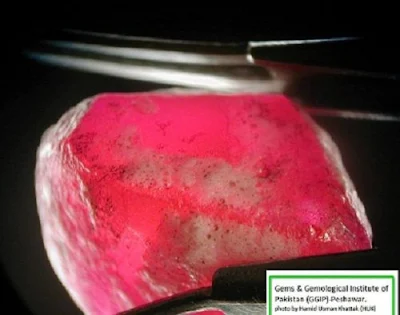 |
| Pits/bubbles seen |
2. Curved Striations and Bubbles in Ruby
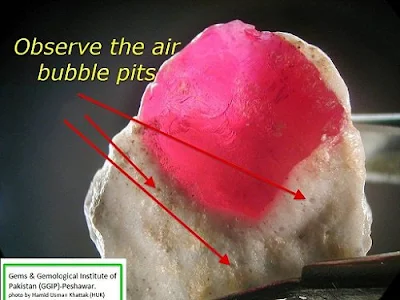 |
| Synthetic ruby in the mother rock |
If you suspect that a ruby embedded in marble or calcite is synthetic, it's always a good idea to have it examined by an expert gemologist to confirm your suspicions.
Internal Inclusions in Flame Fusion / Verneuil Ruby
Flame fusion, also known as the Verneuil process, is a popular method used to produce synthetic rubies. This process involves heating fine alumina powder and melting it to form a boule, which is then cut into gemstones. While synthetic rubies produced through this method can be of high quality, they often contain internal inclusions that can be used to distinguish them from natural rubies.
Internal Inclusions
One of the most common internal inclusions in flame fusion rubies is gas bubbles. These bubbles can be round or elongated in shape and are often visible under magnification. Additionally, flame fusion rubies may contain curved growth lines, wispy veils, and color banding, which can also be seen under magnification.
Identification Tips
If you suspect that a ruby may be flame fusion synthetic, look for the following clues:
It's important to note that not all flame fusion rubies will exhibit these characteristics, and some natural rubies may also contain gas bubbles and other inclusions. If you are unsure about the authenticity of a ruby, it's always best to have it examined by a professional gemologist.
Flame Fusion / Verneuil Ruby
The flame fusion, or Verneuil process, is a popular method used to produce synthetic rubies. This process involves heating fine alumina powder and melting it to form a boule, which is then cut into gemstones. While synthetic rubies produced through this method can be of high quality, they often contain internal inclusions that can be used to distinguish them from natural rubies.
The Verneuil process can also be used to produce other synthetic gems, such as spinel, rutile, and strontium titanate.
 |
| Air Bubbles in synthetic ruby |


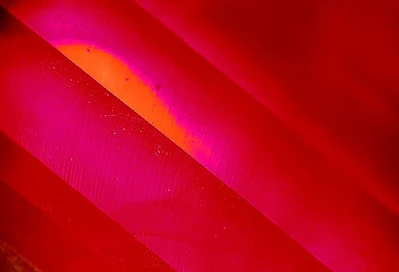
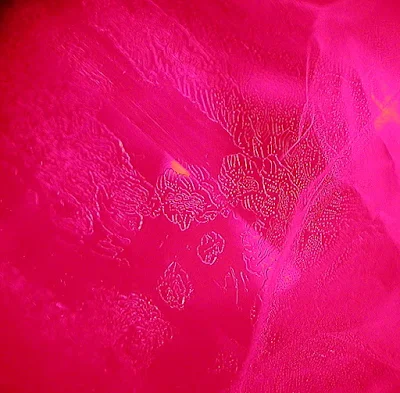
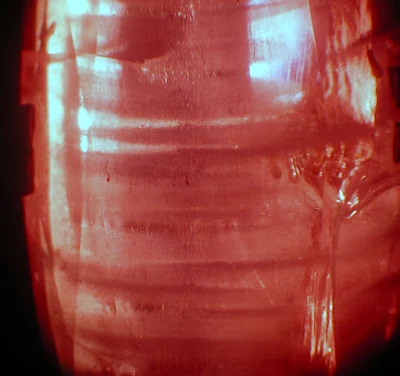



2 comments:
amazing information great job rajaannamalai india
அற்புதமான தகவல்கள் வாழ்த்துக்கள் ராஜா அண்ணாமலை இந்தியா
Post a Comment